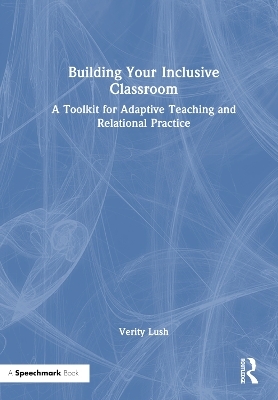
Building Your Inclusive Classroom
Routledge (Verlag)
978-1-032-55991-9 (ISBN)
Building Your Inclusive Classroom explores why we need to adapt our teaching – and our approaches to children and young people – and how this will support the achievement of everyone in the classroom, including the teacher. It will help educators in mainstream settings, across all key stages, to adapt not only their resources but also their approaches for children with Special Educational Needs and/or Disabilities (SEND) and their peers.
This accessible resource provides a toolkit of ideas, methods, and motivation to enable teachers to make their classrooms fully inclusive. Chapters present the most effective evidence-based approaches – exploring both relational, restorative practice and traditional methods – to provide the foundations upon which to build inclusive classrooms. The book:
Offers practical suggestions along with examples and case studies
Includes reflective questions to encourage readers to consider their current settings
Provides clear summaries and breakdowns of key guidelines and concepts
Does the heavy lifting for you and presents evidence-based approaches in an engaging manner
Incorporates the voices of staff and parents throughout
Inspires the reader to take risks, enhance current practice, and to make meaningful change for children and young people.
Adaptive teaching has traversed beyond just the mini-whiteboard and the writing frame, and we need now, more than ever, to differentiate and adapt our approaches too, for children both with and without diagnosed SEND. This book will be essential reading for mainstream teachers, Special Educational Needs and/or Disabilities Co-ordinators (SENDCOs) and trainee teachers, across all key stages.
Verity Lush is a SENDCO within a mainstream all-through school (ages 4-16). She has been teaching for 20 years but it was upon joining a specialist SEND provision in 2014 that she became a passionate advocate for children with SEND. Verity’s current school is set within a diverse, inner-city area, in a school that now feels like family to her. She firmly believes that relationships are at the core of everything.
Introduction
Chapter 1: Meeting Needs
Chapter 2: What are Special Educational Needs and/or Disabilities (SEND)?
·
Chapter 3: The What and the Why of Relational Approaches
Part 1: The ‘What’ of Relational Approaches
Part 2: The ‘Why’ of Relational Approaches
Chapter 4: The ‘How’ of Relational Approaches. Four Core Approaches with which to Build Your Foundation
Part 1: Emotional Intelligence·
Part 2: Nurture·
Part 3: Restorative (or Relational) Practice·
Part 4: PACE: Playfulness, Acceptance, Curiosity and Empathy
Chapter 5: Evidence-Based Adaptive Teaching and How to Do It·
Part 1: Evidence-Based Recommendations for Adaptive Teaching
Part 2: Practical Ideas for Adaptive Teaching
Part 3: Using Playfulness (PACE) to Adapt Planning and Resources
·
Chapter 6: A Need-To-Know Basis: Pulling it All Together
·
Chapter 7: What About the Adults? Parents, Carers and Support Staff
A Final Word
Appendix
Acknowledgements
Index
| Erscheinungsdatum | 28.12.2023 |
|---|---|
| Zusatzinfo | 23 Tables, black and white; 9 Line drawings, black and white; 9 Illustrations, black and white |
| Verlagsort | London |
| Sprache | englisch |
| Maße | 174 x 246 mm |
| Gewicht | 510 g |
| Themenwelt | Sozialwissenschaften ► Pädagogik ► Schulpädagogik / Grundschule |
| Sozialwissenschaften ► Pädagogik ► Schulpädagogik / Sekundarstufe I+II | |
| Sozialwissenschaften ► Pädagogik ► Sonder-, Heil- und Förderpädagogik | |
| ISBN-10 | 1-032-55991-8 / 1032559918 |
| ISBN-13 | 978-1-032-55991-9 / 9781032559919 |
| Zustand | Neuware |
| Informationen gemäß Produktsicherheitsverordnung (GPSR) | |
| Haben Sie eine Frage zum Produkt? |
aus dem Bereich


